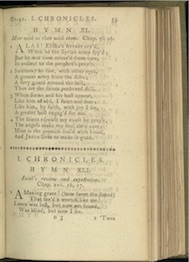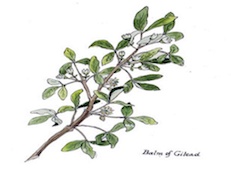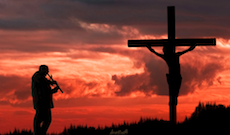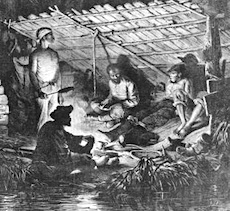Spirituals
Amazing Grace
"Amazing Grace" is one of the most recognizable songs in the English-speaking world. The words were written by John Newton back in 1772 and in 1835, American composer William Walker set it to the hymn tune known as "New Britain" in a shape-note format. This is the version most frequently sung today. Ironically John Newton was a slave trader which helps explain the powerful message that forgiveness and redemption are possible regardless of sins committed and that the soul can be delivered from despair through the mercy of God.
The arrangement features the Native American flute and the meter varies between 4/4 and 3/4. Jazz guitar, lush strings, an electric bass, harp and congas fill out the arrangement.
Read John Newton's life story - It is fascinating.

There Is A Balm In Gilhead
This is a simple arrangement of a beautiful spiritual featuring a small ensemble of just:
- Native American flute;
- Jazz guitar; and
- Acoustic bass

(click to expand/collapse)
There is a Balm in Gilead appears to draw its inspiration from Jeremiah Chapter 8 v22:
"Is there no balm in Gilead? Is there no physician there? Why then is there on healing for the wounds of my people?". CITE»
About the Balm
True balm of Gilead was very rare, and appears to have been produced from the unrelated tree Pistacia lentiscus SOURCE». The plant was renowned for the expensive perfume that was thought to be produced from it, as well as for exceptional medicinal properties that were attributed to its sap, wood, bark, and seeds. Commiphora gileadensis is instantly recognizable by the pleasant smell given out when a twig is broken or a leaf crushed.
The bark of the balsam tree is cut to cause the sap to flow out. This soon hardens, and has a sweet smell that quickly evaporates. The hardened resinous gum is chewed, is said to taste either like a lemon or like pine resin, and it is also burned as incense. CITE»
Were You There (When They Crucified My Lord)?
Were You There (When They Crucified My Lord) is an American spiritual that was first printed in 1899. Were You There was composed by enslaved African-Americans in the 19th century. In 1940, often referred as a "plantation hymn", it was the first spiritual to be included in any major American hymnal. It's poignant lyrics serve as a metaphor likening Jesus’s suffering to the suffering of slaves.
This recording was a collaboration between myself on Native American Flute and Gabe Shuford on keyboards. Being in the process of moving and not having a home studio for more than a month necessitated Gabe to step in and arrange and record the accompaniment. I gave him some basic suggestions and what a marvelous job he did! This recording was used in FUMC's Good Friday Easter Service.

Kumbaya
Kum-ba-yah ("Come by Here") is an African American spiritual of disputed origin, but known to be sung in the Gullah culture of the islands off South Carolina and Georgia, with ties to enslaved West Africans.It was an appeal to God to come and help those in need.
The song enjoyed newfound popularity during the American folk music revival of the early to mid-1960s, largely due to Joan Baez's 1962 recording of the song, and became associated with the Civil Rights Movement of that decade. Kumbaya
My modern reharmonization, features a custom patch I programed on the

A Cappella Quartet
Arranged for a cappella male quartet by Rich Coffey
(all music traditional unless noted otherwise)
The true form of some of these tunes should end with the A section after any number of verses. These recordings do not reflect this form and only represent a snippet of the actual song. Enjoy listening...
